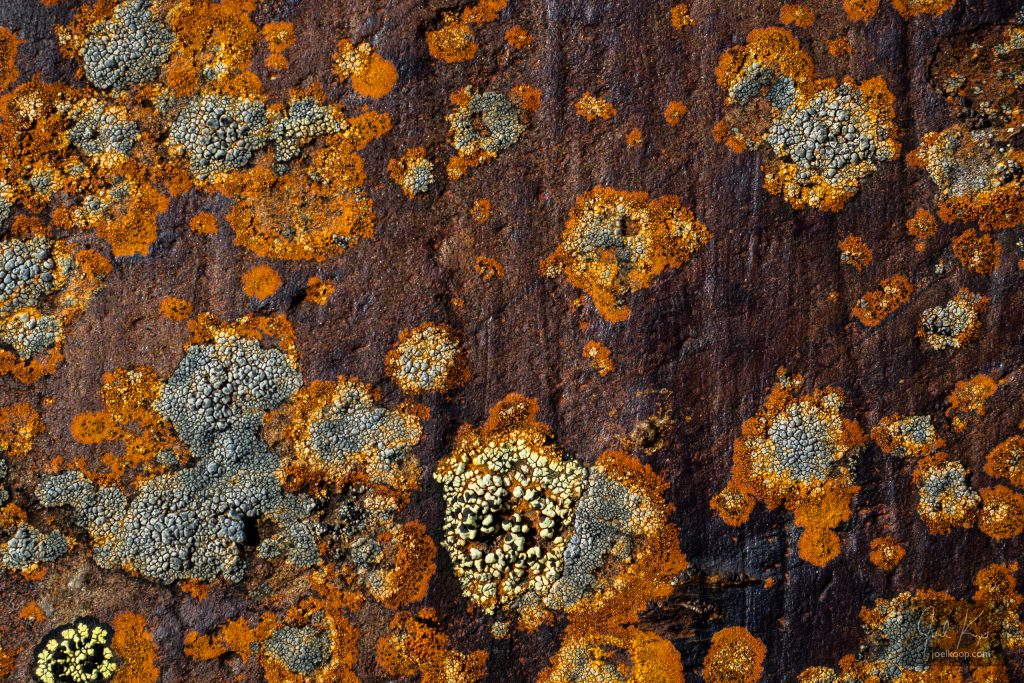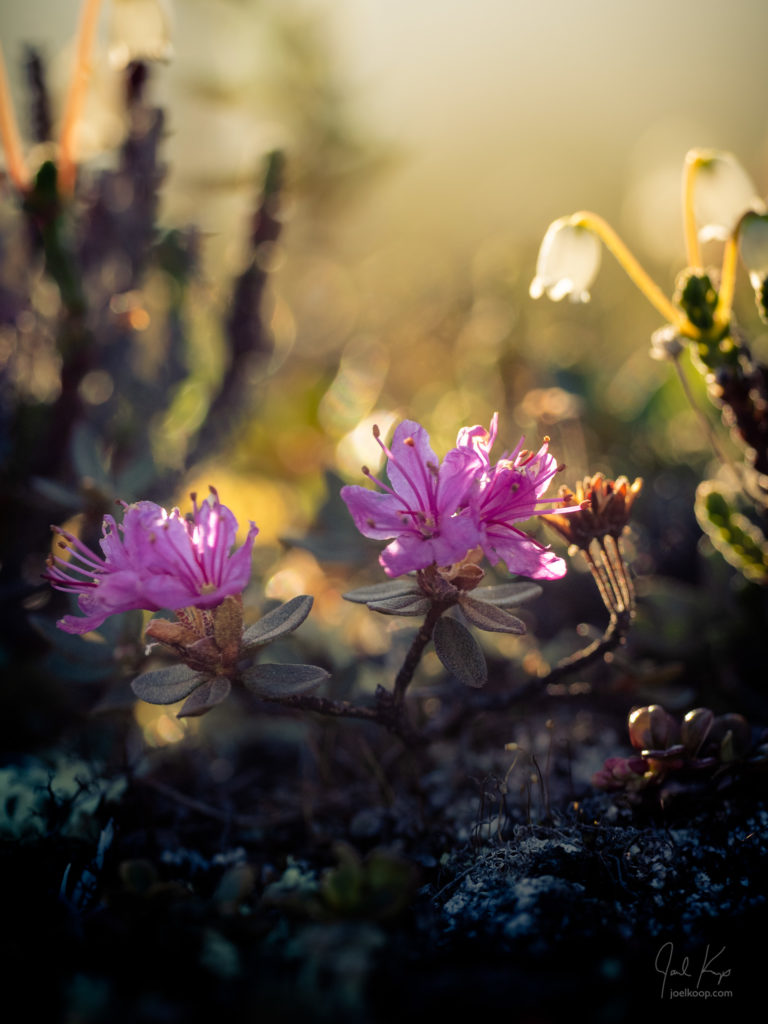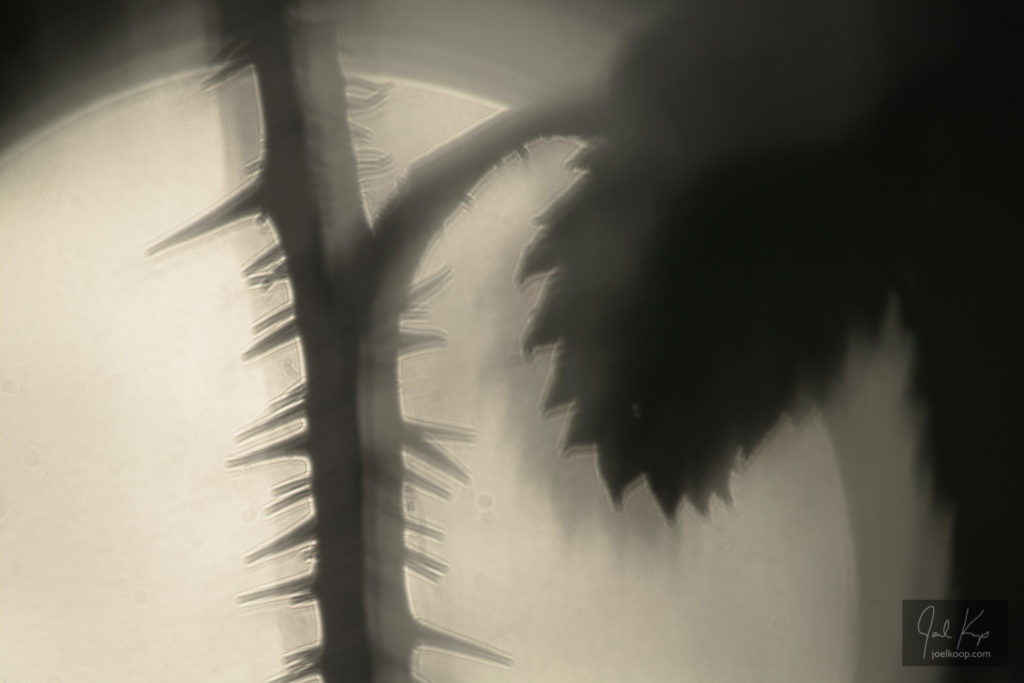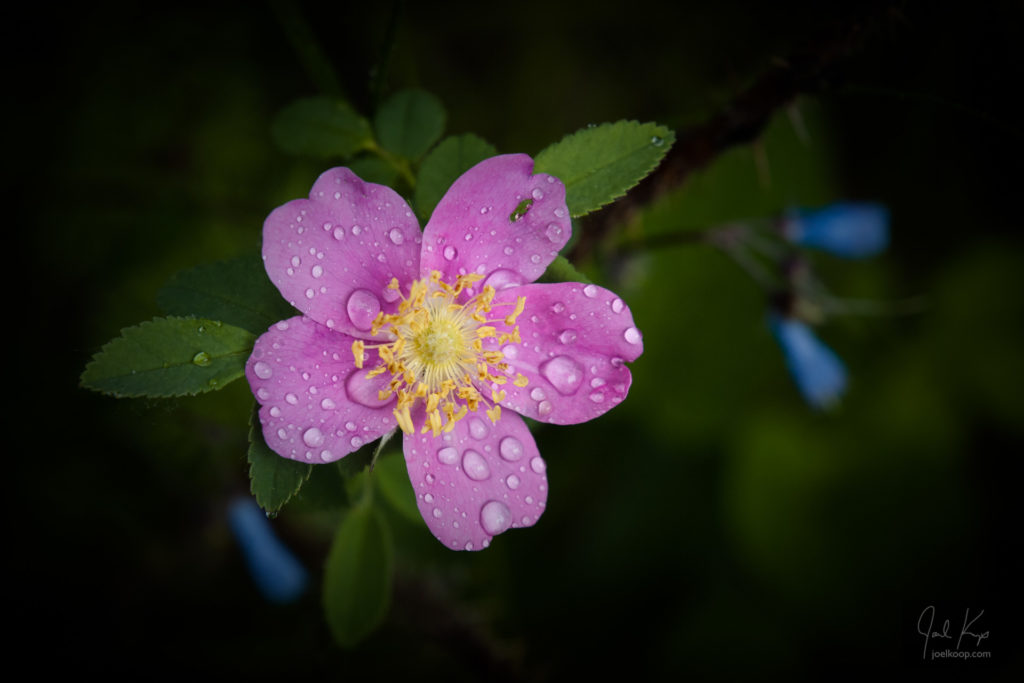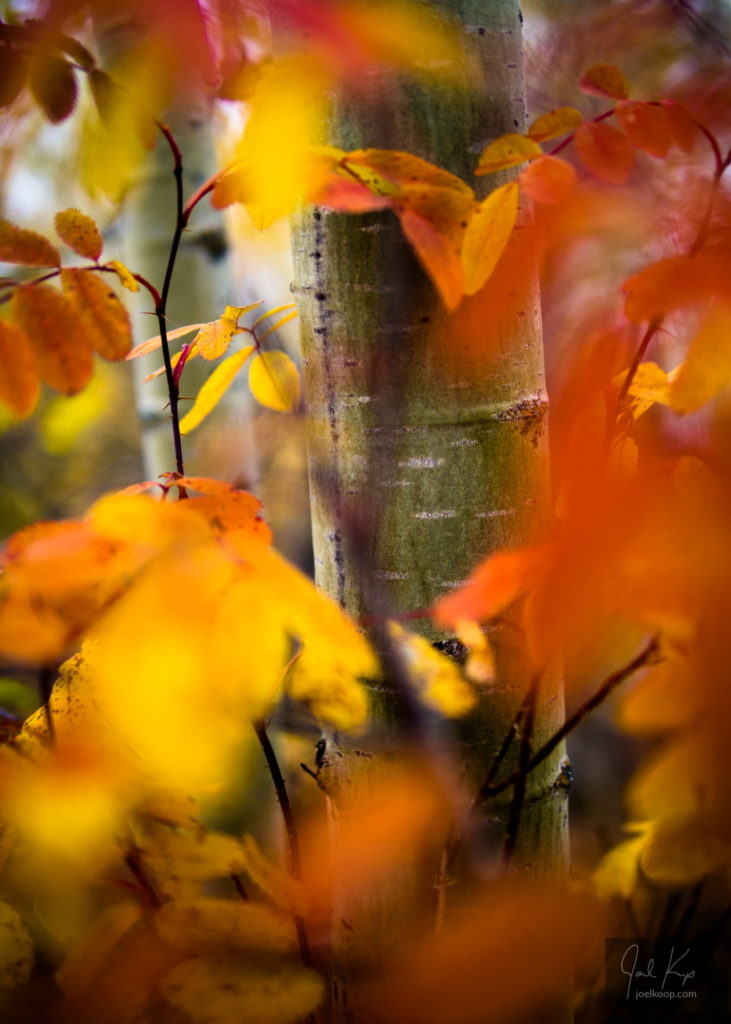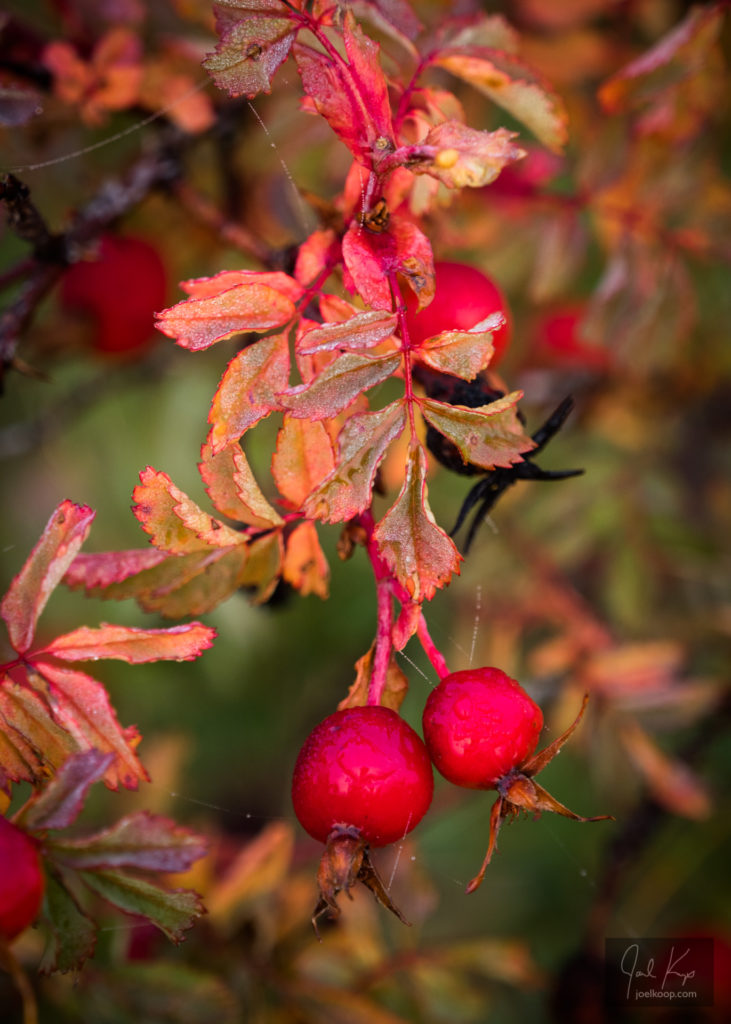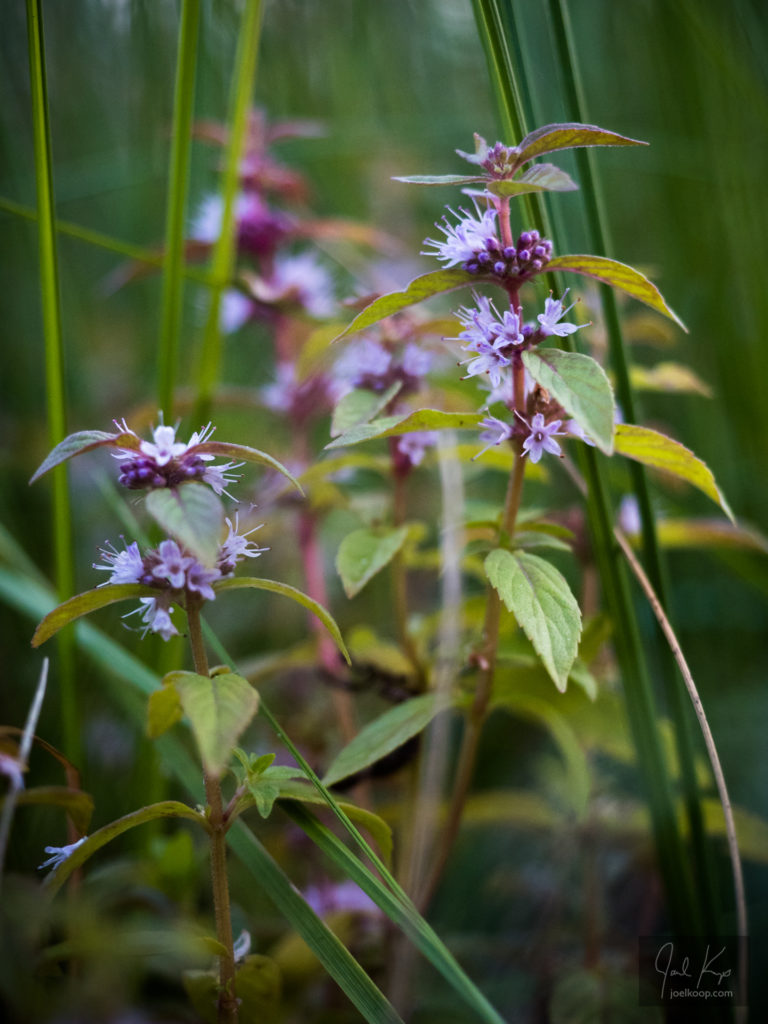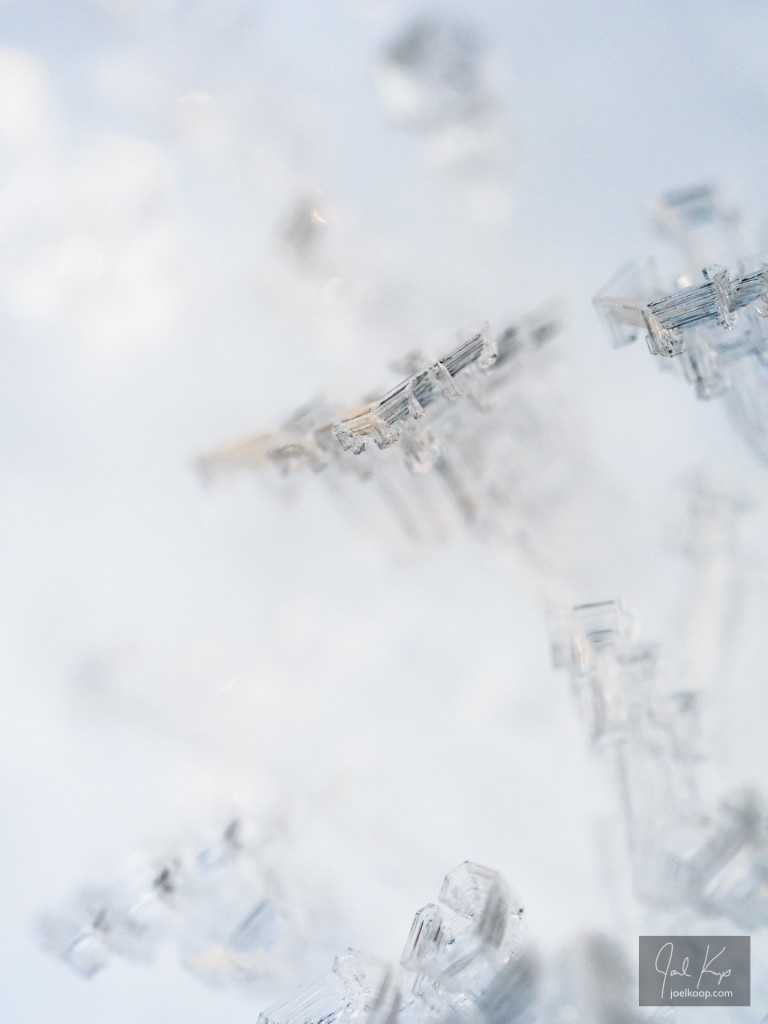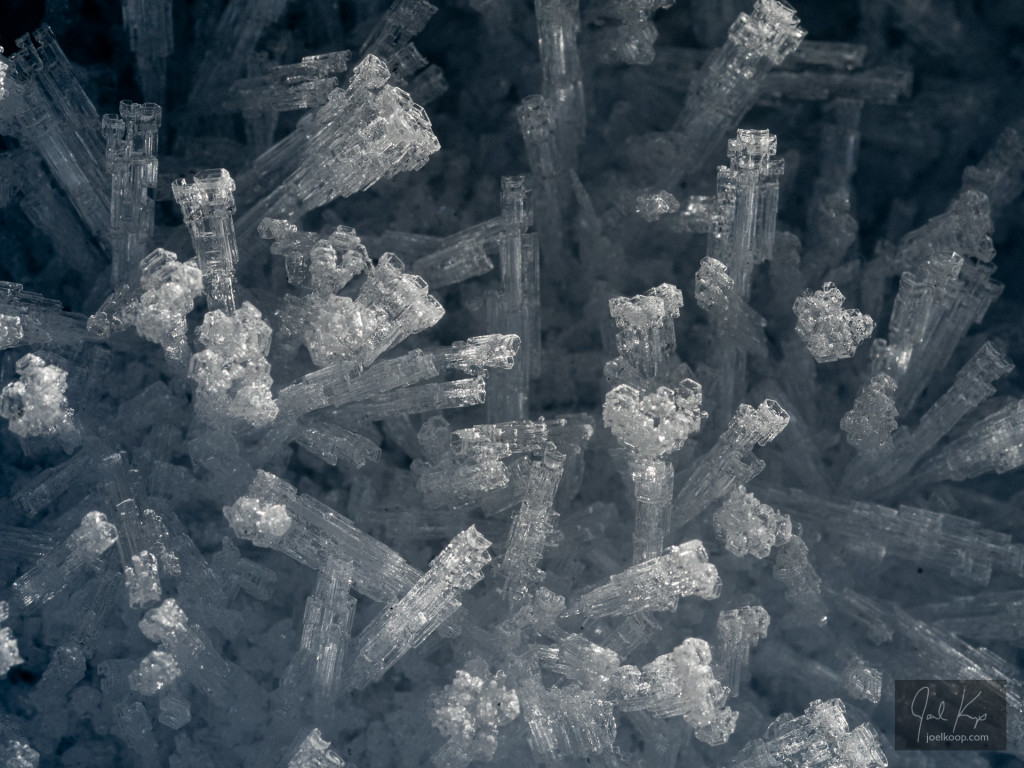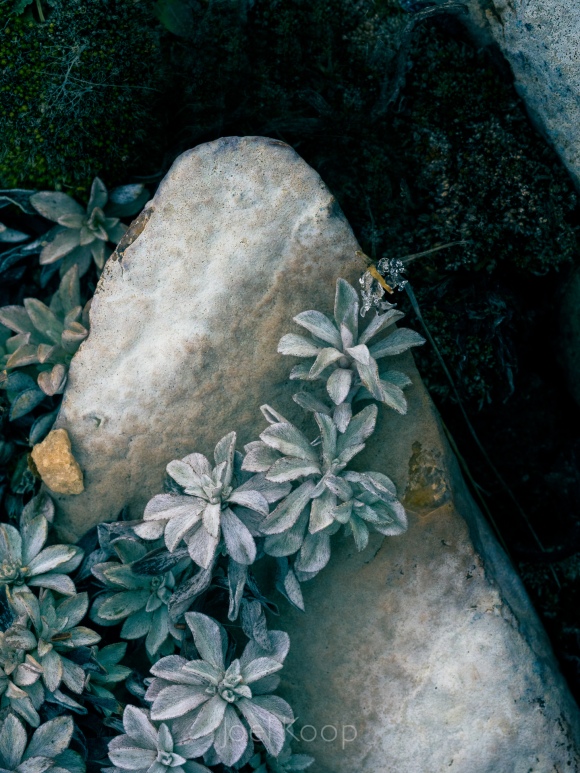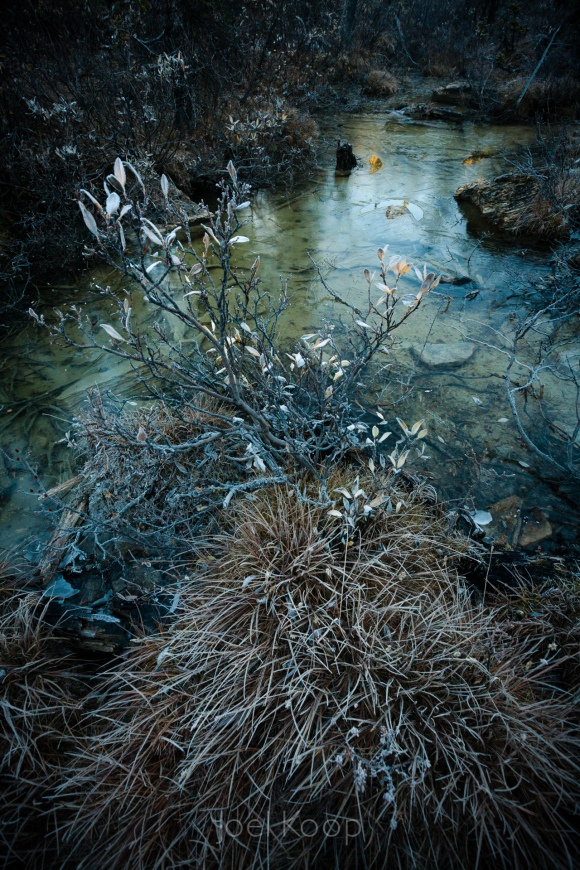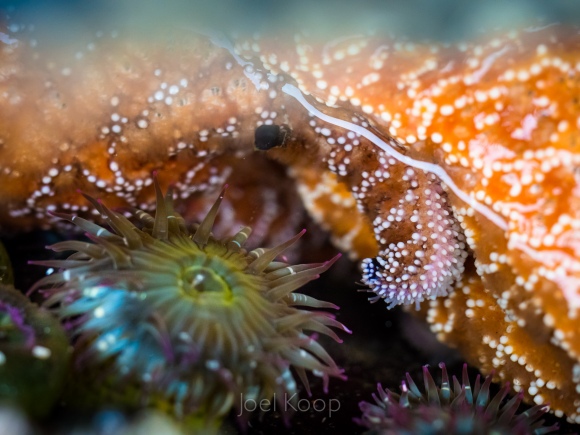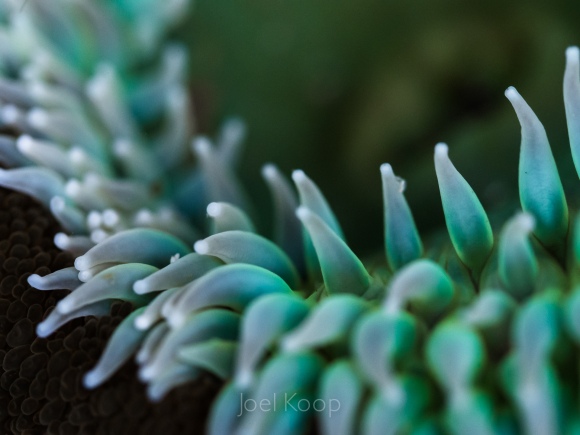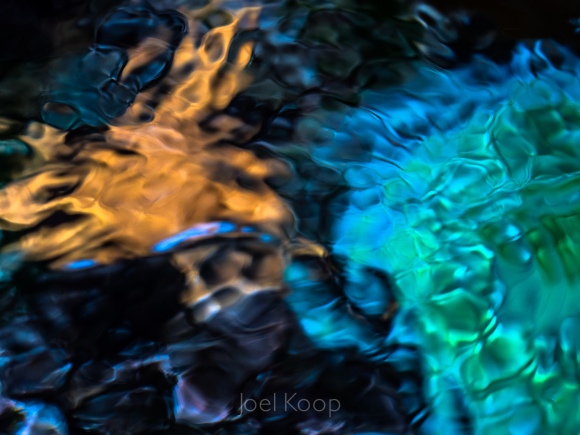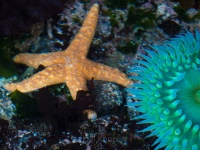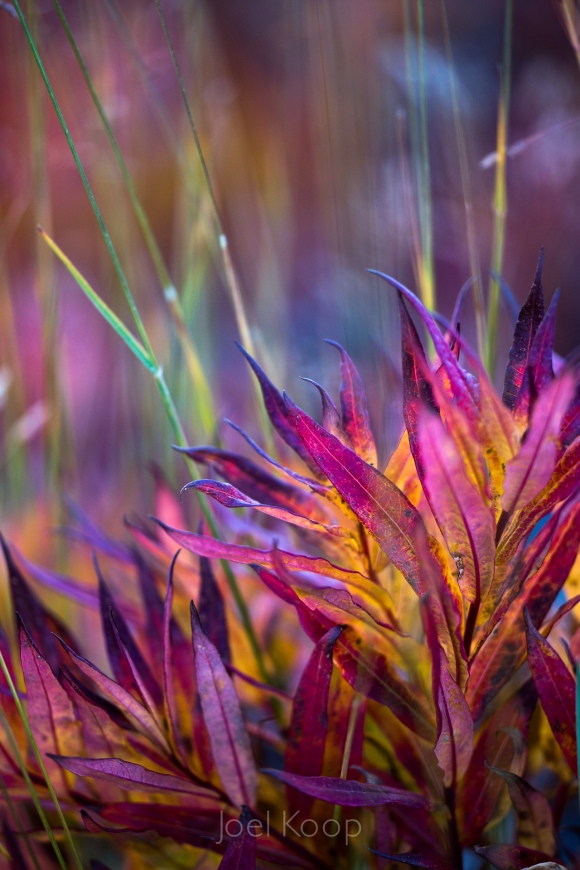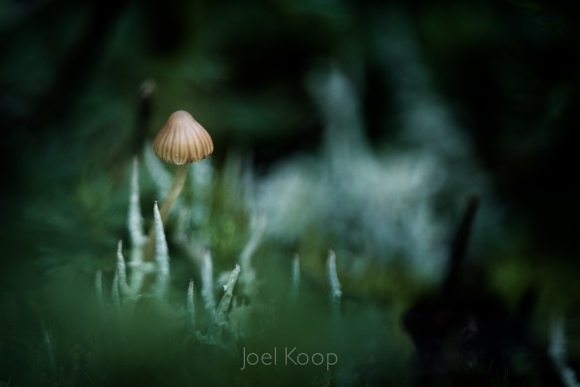While taking photos for the Royal Alberta Museum, I learned that Lichenometry is a thing. I was photographing archaeological sites and the archaeologist I was working with told me that the time since a rock has been disturbed can be determined by the lichen growing on it.
I don’t know how to do that, but there’s a good chance this lichen has been growing here for 11,000 years. This photo was taken in the Northwest Territories, and that’s roughly when the Laurentide Ice Sheet would have receded in this area. If you look at the rock under the lichen, you can see striations (little grooves) and polish from a glacier grinding down the surface of the rock. You can also tell which direction the glacier was moving from the direction of the grooves.
